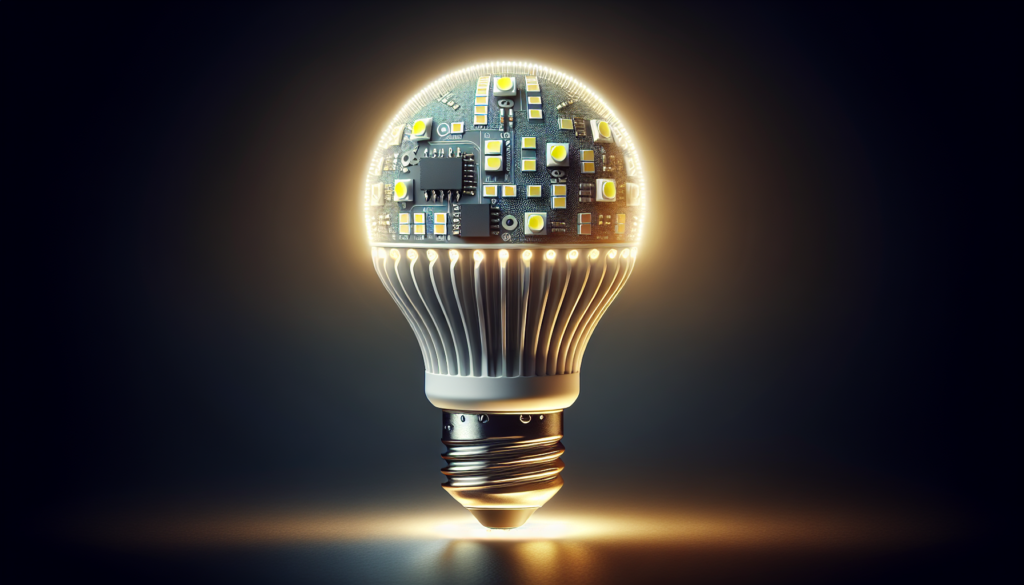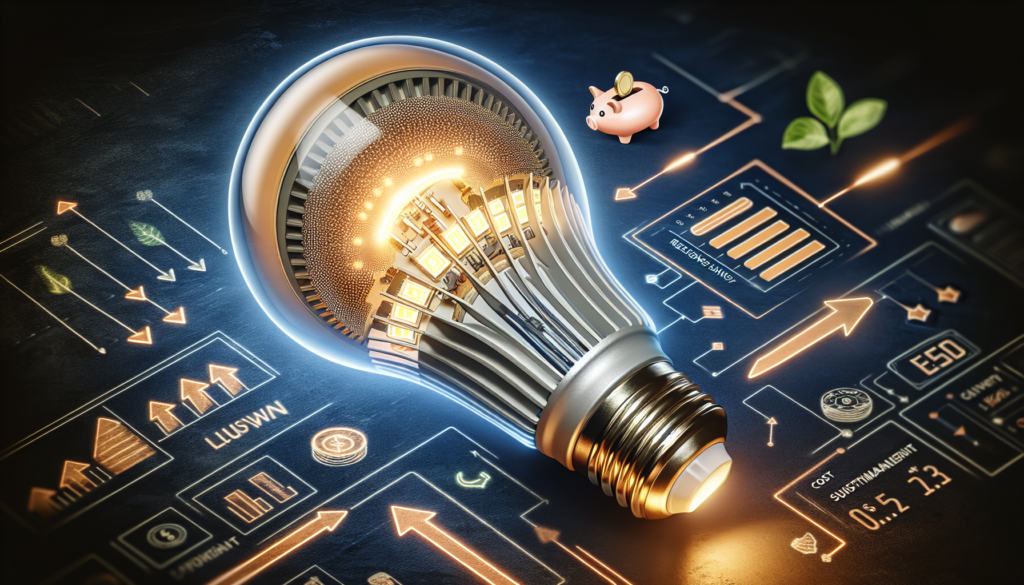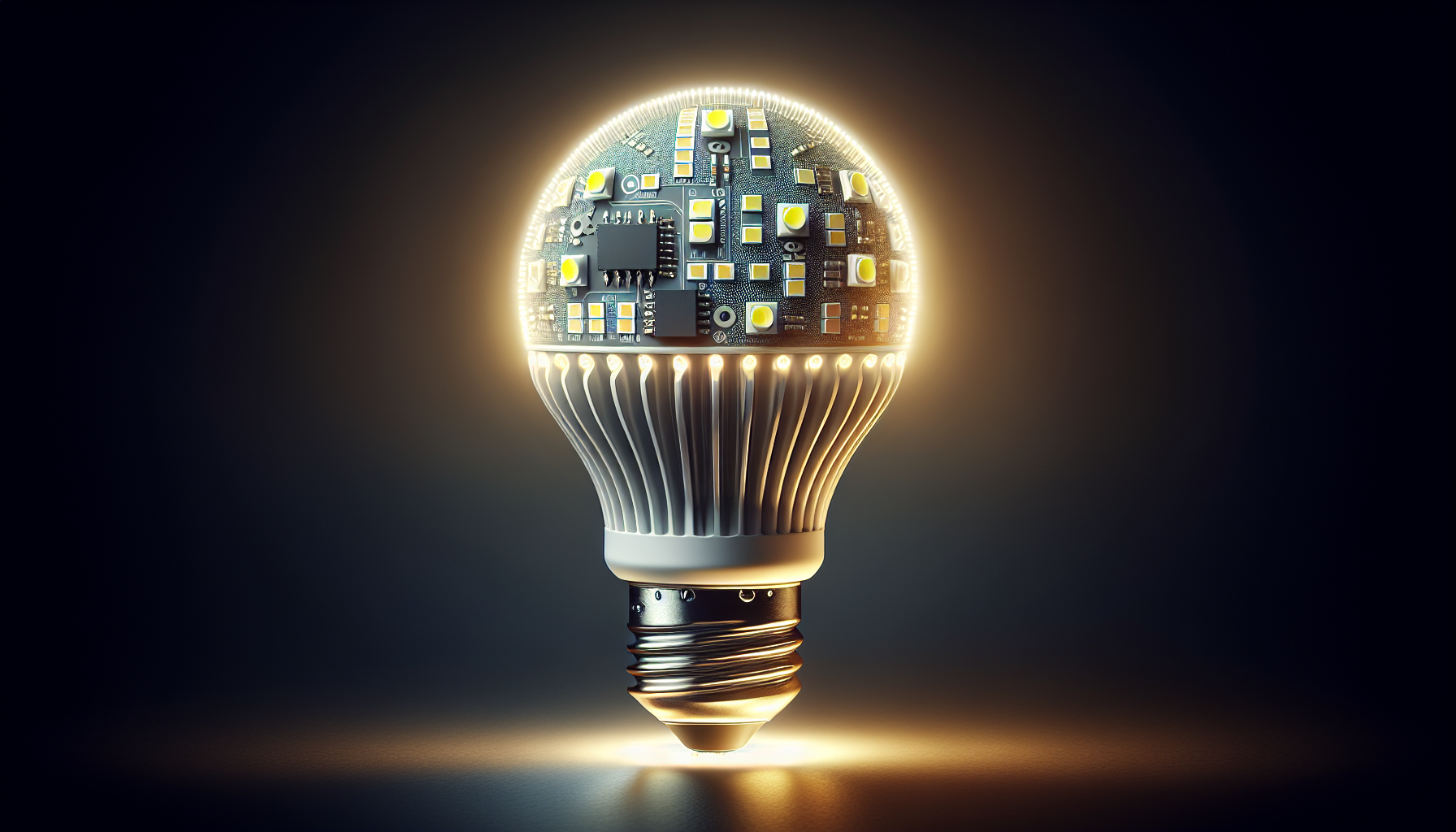Are you looking for ways to reduce your energy consumption and save money on your electricity bills? Look no further than energy-efficient lighting. In this article, we will explore the benefits and cost savings of switching to energy-efficient lighting options. By making this simple switch, you can not only contribute to a greener environment but also enjoy significant long-term savings on your energy expenses. So let’s explore the advantages of energy-efficient lighting and uncover how it can benefit both your wallet and the planet.

The Importance of Energy-Efficient Lighting
In today’s society, where energy consumption and environmental awareness are top priorities, it is crucial to recognize the significance of energy-efficient lighting. By adopting energy-efficient lighting solutions, you not only contribute to the reduction of energy consumption but also experience substantial savings on your electricity bills. Furthermore, these lighting options have a positive impact on the environment by reducing carbon emissions, waste generation, and overall energy demand. Let’s explore the various types of energy-efficient lighting and understand their advantages and benefits.
Types of Energy-Efficient Lighting
There are several types of energy-efficient lighting available in the market, each offering its unique set of advantages and characteristics. By familiarizing yourself with these options, you can make an informed choice that suits your specific lighting needs. The types of energy-efficient lighting include LED (Light-Emitting Diode) lighting, CFL (Compact Fluorescent Lamp) lighting, Halogen Incandescent lighting, High-Intensity Discharge (HID) lighting, and Induction lighting.
Advantages of LED Lighting
LED lighting has gained immense popularity in recent years due to its numerous advantages. One significant advantage is its long lifespan, which far surpasses traditional lighting options. LED lights can last up to 25 times longer than incandescent bulbs, reducing the need for frequent replacements. Additionally, LED lights are highly energy-efficient, converting a higher percentage of electrical energy into light rather than heat. This efficiency translates into significant energy savings and lower electricity bills. LED lighting is also versatile, offering a wide range of sizes, shapes, and colors to suit any lighting design. Furthermore, LED lights are durable, resistant to shocks, vibrations, and extreme temperatures, making them suitable for various environments. Lastly, LED lights provide instant lighting, eliminating the annoying delay often experienced with other types of lighting.
Benefits of CFL Lighting
CFL lighting, also known as compact fluorescent lamp lighting, is another excellent choice for energy efficiency and cost savings. CFL bulbs use significantly less energy than traditional incandescent bulbs, while still providing the same level of brightness. This energy efficiency translates to significant savings on electricity bills, making CFL lighting very affordable in the long run. Additionally, CFL bulbs are widely available in the market, making it easy and convenient to switch to this energy-efficient option. Many people are hesitant to switch to CFL lighting because they remember the earlier models with harsh, unflattering lighting. However, modern CFL bulbs offer improved light quality, closely resembling natural daylight.

Cost Savings with Energy-Efficient Lighting
One of the most significant benefits of energy-efficient lighting is the substantial cost savings it offers. By adopting energy-efficient lighting solutions, you can expect to see a significant reduction in your electricity bills. These savings result from the lower energy consumption of energy-efficient bulbs compared to traditional incandescent bulbs. Additionally, energy-efficient bulbs tend to have a longer lifespan, reducing the need for frequent replacements and resulting in cost savings on maintenance and bulb replacements. Furthermore, many utility companies and governments offer incentives and rebates for switching to energy-efficient lighting, which can further offset the initial investment.
Environmental Impact of Energy-Efficient Lighting
Energy-efficient lighting has a profound positive impact on the environment. By reducing energy consumption, these lighting options effectively lower carbon emissions, contributing to mitigating climate change. Additionally, energy-efficient lighting produces less waste, as bulbs have a longer lifespan and require fewer replacements. This reduction in waste generation helps create a more sustainable and environmentally friendly society. Moreover, the lower energy demand resulting from energy-efficient lighting contributes to the overall conservation of resources and promotes a greener and more sustainable future.
Considerations Before Switching to Energy-Efficient Lighting
Before transitioning to energy-efficient lighting, there are a few essential factors to consider. Firstly, you should evaluate the initial cost of the energy-efficient lighting options you are considering. While these options may have a higher upfront cost compared to traditional lighting, the long-term cost savings outweigh the initial investment. Secondly, it is crucial to ensure that the energy-efficient bulbs are compatible with your existing fixtures. While most bulbs are designed to fit standard sockets, it is still necessary to double-check compatibility to avoid any compatibility issues. Additionally, consider the lighting design and ambiance you desire for your space, as different energy-efficient bulbs offer varying hues and lighting qualities. It’s also essential to check the dimming capabilities of the bulbs, as not all energy-efficient options are compatible with dimmer switches. Lastly, be mindful of the color temperature of the bulbs, as it can significantly impact the mood and atmosphere of your space.
Installation and Maintenance
Proper installation and regular maintenance are crucial for maximizing the benefits of energy-efficient lighting. Firstly, it is essential to choose the right bulbs for your specific needs. Consider the wattage, lumens, and color temperature to ensure the desired lighting outcome. Secondly, ensure that the bulbs are installed correctly, following the manufacturer’s instructions for optimal performance and safety. Properly installed bulbs will provide the best lighting quality and energy efficiency. Lastly, regular cleaning and maintenance of the bulbs are essential to maintain their longevity and performance. Dust and dirt can reduce the light output of the bulbs, so be sure to clean them regularly to keep them shining brightly.
Steps to Transitioning to Energy-Efficient Lighting
To successfully transition to energy-efficient lighting, it is essential to follow a systematic approach. Begin by evaluating your current lighting system to understand your specific needs and requirements. Consider factors such as the number of bulbs, their usage patterns, and the areas they illuminate. Once you have a clear understanding of your lighting needs, research energy-efficient lighting options that best meet those requirements. Compare the benefits, features, and costs of different options to make an informed decision. Next, develop a transition plan that outlines the steps and timeline for replacing your existing lighting with energy-efficient alternatives. Implement the plan systematically, replacing bulbs or fixtures gradually or all at once, depending on your preferences and budget. Finally, monitor your energy savings after the transition is complete. Compare your electricity bills before and after the switch to gauge the cost savings and overall impact of energy-efficient lighting on your energy consumption.
Case Studies and Success Stories
Energy-efficient lighting has been adopted successfully in various settings, including commercial buildings, residential properties, and government initiatives. Commercial buildings, such as offices, retail stores, and warehouses, have reported significant reductions in energy consumption and cost savings after transitioning to energy-efficient lighting solutions. Residential properties, including homes and apartments, have also experienced similar benefits, with reduced electricity bills and enhanced lighting quality. Furthermore, governments at various levels have initiated programs and incentives to encourage the adoption of energy-efficient lighting. These initiatives have had a positive impact on the environment and have helped individuals and businesses save on energy costs.
In conclusion, energy-efficient lighting offers numerous benefits and cost savings. By reducing energy consumption and lowering electricity bills, energy-efficient lighting solutions positively impact both your wallet and the environment. LED lighting provides a long lifespan, energy efficiency, versatility, durability, and instant lighting. CFL lighting offers energy efficiency, affordability, availability, and improved light quality. The adoption of energy-efficient lighting leads to lower electricity bills, reduced maintenance costs, and longer bulb lifespan. Furthermore, it decreases carbon emissions, waste generation, and overall energy demand. Before making the switch, consider factors such as initial cost, compatibility with existing fixtures, lighting design, and color temperature. Lastly, follow proper installation and maintenance practices to maximize the benefits of energy-efficient lighting.

